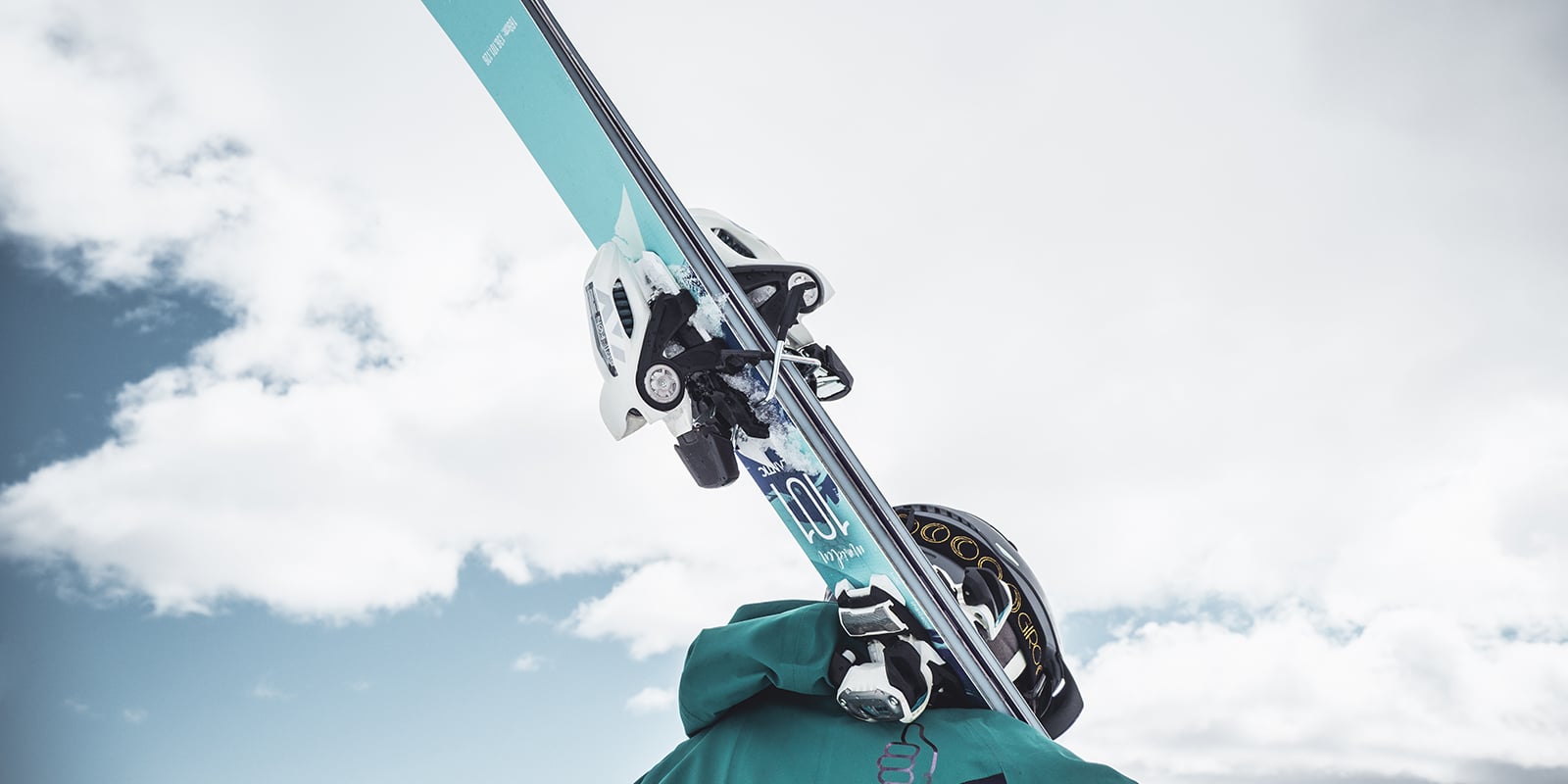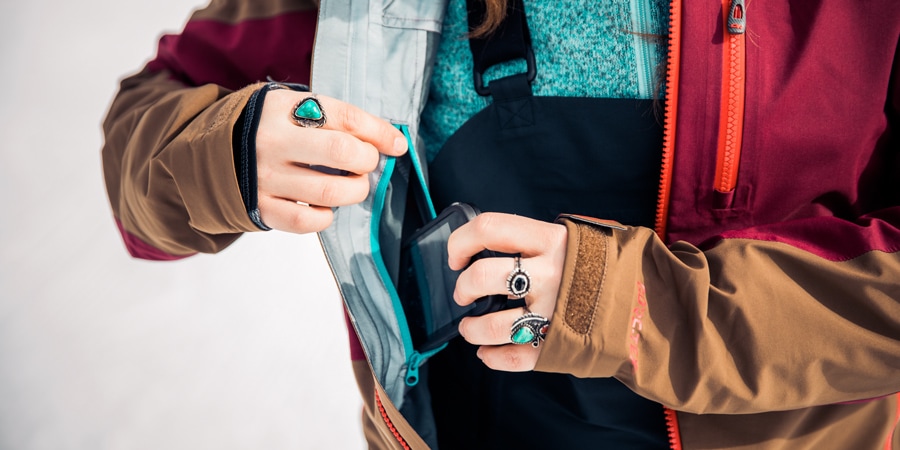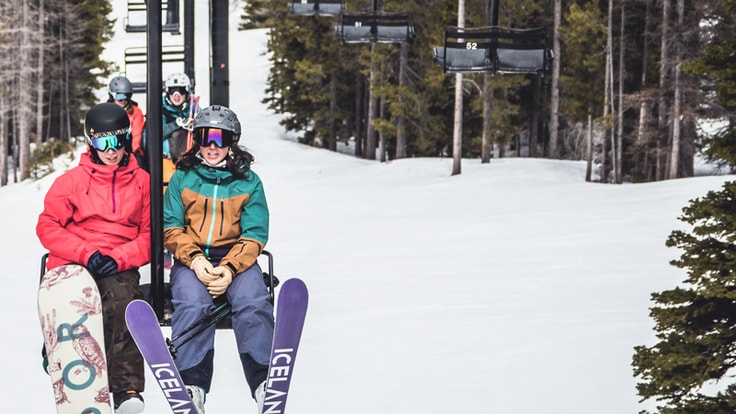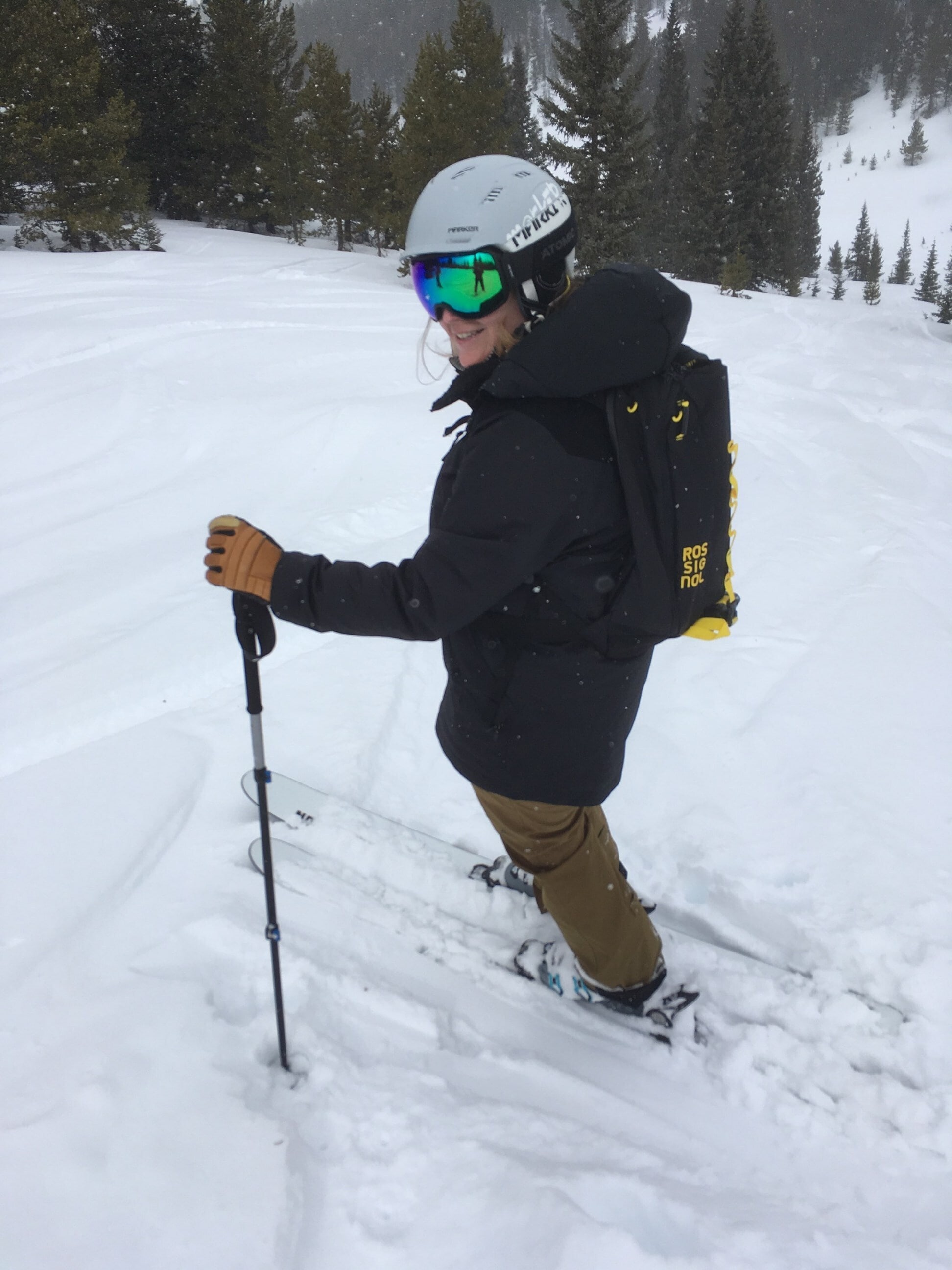Taking up skiing or snowboarding can be a wonderful way to explore the mountains during the winter, access spectacular vistas and stay fit. For those starting out in the sport, here are some basic tips to make your first time out more enjoyable.
Video: 10 First Time Skiing and Snowboarding Tips
Get There Early
If you're driving to the ski area, get there early to beat traffic and snag a parking spot closer to the entrance. Give yourself plenty of time to park, rent gear, locate lockers and restrooms, and get situated. If you're taking a lesson, many schools ask that you arrive at least one hour before the lesson begins. Walking in ski or snowboard boots while hauling gear can feel awkward at first, so you'll want to give yourself extra time to get around.
Use the Gear Drop-Off Zones
Many ski areas have drop-off zones where you can load or unload, which is particularly helpful if you're a family with little kids and a lot of gear. Check the ski area's website to see if they offer a drop-off area.
Don't Overheat in the Car
Minimize the amount of changing you need to do at the ski area by getting partly dressed beforehand. Wear base layers (long underwear tops and bottoms) on the way to the mountain so you're already halfway dressed once you arrive. That said, don't put all your warm clothes on yet—you don't want to sweat and then get chilled later. You may even want to have a different pair of socks to put on when you arrive so your feet start out completely dry.
Keep Your Ski Boots Warm
Cold ski boots make for unhappy feet. Boots that are cold are stiff and harder to get into. Store boots inside your car on the way to the hill or bring them inside the ski lodge to warm up before you put them on. Avoid leaving your boots in your car trunk, truck bed or cartop box on the way to the ski area.
Carry Your Skis Like a Pro

Place the skis on the ground with the tips pointing up and the bases touching each other. Slide one ski down onto the other so the brakes interlock. Raise the skis over one shoulder with the tips pointing forward and your shoulder in front of the bindings. Curl your arm around the front of the skis to counterbalance the weight. Carry your poles in the other hand. Ski carriers or straps can be helpful. (Carrying your skis over your shoulder is useful for longer distances such as from your car to the lodge, but avoid carrying your skis this way in crowded spaces).
Rent a Locker
Some minimalists prefer to get dressed at the car and head straight for the lifts, bypassing lockers altogether. Others, especially families with kids, may find it easier to bring clothes to change into at the lodge and store extra clothes and lunches in the lockers.
Prevent Gear Theft
Most larger ski areas will offer a ski/snowboard check. Use it to store your gear when you take a break without worrying that someone will walk off with your stuff. Many resorts charge nominal fees for you to drop off your equipment for a few hours or even store them overnight (and it's often included when you rent your gear at the hill.)
Stay Fueled Up
Power up in the morning with a balanced breakfast with carbohydrates and protein. Think fruit, yogurt, eggs, oatmeal, whole-grain cereal, rice, etc. Eat about an hour or two before you begin your activity. Keep energy-packed snacks in pockets close to your body so they don't freeze and you don't have to go back to the lodge to eat. Eat small snacks throughout the day to keep your energy up. At lunchtime, avoid heavy meals that take long to digest and can make you feel lethargic on the slopes.
Save Your Lunch Money
Ski areas usually have designated areas for those who bring their lunch, and many resorts provide microwaves and hot water so you can enjoy your own hot meals and drinks.
Stay Hydrated
Staying properly hydrated is as essential in cold weather as it is in hot weather. Your body loses water as you exercise, sweat and breathe. Drinking helps your muscles and body function more effectively and recover faster. Get into the habit of drinking before, during and after your powder days. Make it easy to take sips throughout your day by carrying a hydration reservoir in a small backpack. Leave the libations for when you're off the slopes; alcohol can dehydrate you and can impair your ability to ride.
Stay Warm
While skiing and boarding, your body will go through extremes of temperatures as you cool down waiting for and riding the lifts and then heat up again as you work your way down the mountain. Wear warm layers of clothing, adding and removing layers or venting as needed. A fleece or merino wool neck warmer is a must for pulling up over your mouth and nose when the cold wind blows. If your hands tend to run cold, try wearing waterproof mittens over inner liners—these tend to keep your hands warmer than gloves do. Inexpensive heat warmer packets are another convenient way to keep your digits warm. (For more ideas, see How to Keep Your Hands Warm.)
Protect Your Skin
Keep your face and lips protected from the sun and wind by applying and reapplying sunscreen and lip balm. You're just as susceptible to sunburn during cloudy, cold days as hot, sunny ones. Snow can reflect the sun's rays back up at you, so don't forget to protect your chin, the underside of your nose and your neck. Learn more in our article about how to use sunscreen. While some resorts provide tissue boxes near lift lines, it's a good idea to tuck some tissues or a soft bandana in your pocket to wipe runny noses.
Keep Your Phone Functioning

Having a cellphone on the slopes can be a necessity if you need to communicate with your group. But very cold temperatures can shorten your phone's battery life, so keep the device warm and close to your body. Put it in a zip-top bag or a waterproof case and store it inside an inner pocket. (As a backup plan, set a time and place to meet your crew just in case your phone does indeed die.)
Avoid Foggy Goggles
Make sure your goggles fit well and form a tight seal on your face to prevent warm air (from your breath or body) from entering. Wear your goggles on your face rather than around your neck or on the top of your head to avoid moisture building up. Keep vents open to prevent sweat from fogging up your goggles. If snow gets inside the lens, tap the goggles to remove excess snow or water and let them dry naturally. New goggles have an anti-fog coating on the inside, so you don't want to rub off that coating.
Pace Yourself
Doing anything for the first time can be intimidating and exhausting. Warm up, stretch and stick to easier runs in the beginning. You can take on more challenging runs as your confidence and skills grow. Take regular breaks. Be patient. Try not to overdo it in the beginning. Have fun! Skiing or snowboarding is about enjoying time with friends or family, creating memories and soaking in majestic views.
Know When to Call It
Skiing and snowboarding are sports that require physical exertion, balance, dexterity and concentration. A day of skiing or riding can be exhausting, especially if you've never done it before. While it may be tempting to ride or ski until last chair, it's better to call it a day when your legs get tired or you can no longer stay in control. Once you're done for the day, it's time to enjoy an après ski treat—you'll have earned it!


